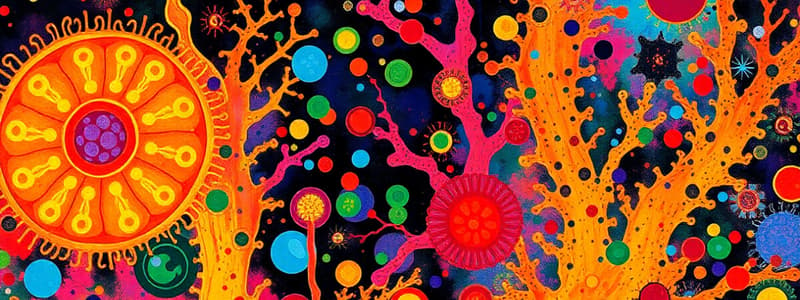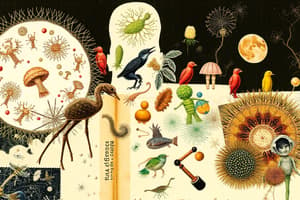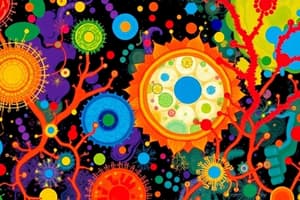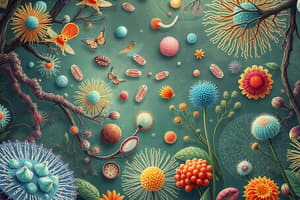Podcast
Questions and Answers
Which of the following groups of organisms are considered microorganisms?
Which of the following groups of organisms are considered microorganisms?
- Bacteria and fungi (correct)
- Birds and insects
- Mammals and reptiles
- Plants and trees
What is a defining characteristic of microorganisms?
What is a defining characteristic of microorganisms?
- Can only be seen with a microscope (correct)
- Always pathogenic
- Can reproduce independently
- Visible to the naked eye
How do microorganisms contribute to the quality of human life?
How do microorganisms contribute to the quality of human life?
- By causing diseases in humans
- By decomposing organic materials (correct)
- By producing oxygen in large quantities
- By creating weather patterns
Which of the following elements do microorganisms recycle?
Which of the following elements do microorganisms recycle?
Which of the following groups is NOT a type of microorganism?
Which of the following groups is NOT a type of microorganism?
Flashcards
What are microorganisms?
What are microorganisms?
Organisms that are too small to be seen with the naked eye and require a microscope for observation.
What are some examples of microorganisms?
What are some examples of microorganisms?
Bacteria, fungi, algae, protozoa, and viruses are all types of microorganisms.
What is the ecological importance of microorganisms?
What is the ecological importance of microorganisms?
Microscopic organisms play a crucial role in maintaining the balance of essential elements like carbon, nitrogen, and sulfur in the environment.
How are microorganisms beneficial to humans?
How are microorganisms beneficial to humans?
Signup and view all the flashcards
What makes microorganisms so diverse?
What makes microorganisms so diverse?
Signup and view all the flashcards
Study Notes
Microbial Diversity
- Microorganisms are diverse, encompassing bacteria, cyanobacteria, rickettsiae, chlamydiae, fungi, single-celled algae, protozoa, and viruses.
- Microorganisms are defined by their microscopic size.
Microbial Contributions
- Many microorganisms play vital roles in maintaining environmental balance.
- Decomposition of dead matter, recycling of carbon, nitrogen, sulfur, phosphorus, and other elements.
- Microbes positively impact human life through these processes.
Studying That Suits You
Use AI to generate personalized quizzes and flashcards to suit your learning preferences.




